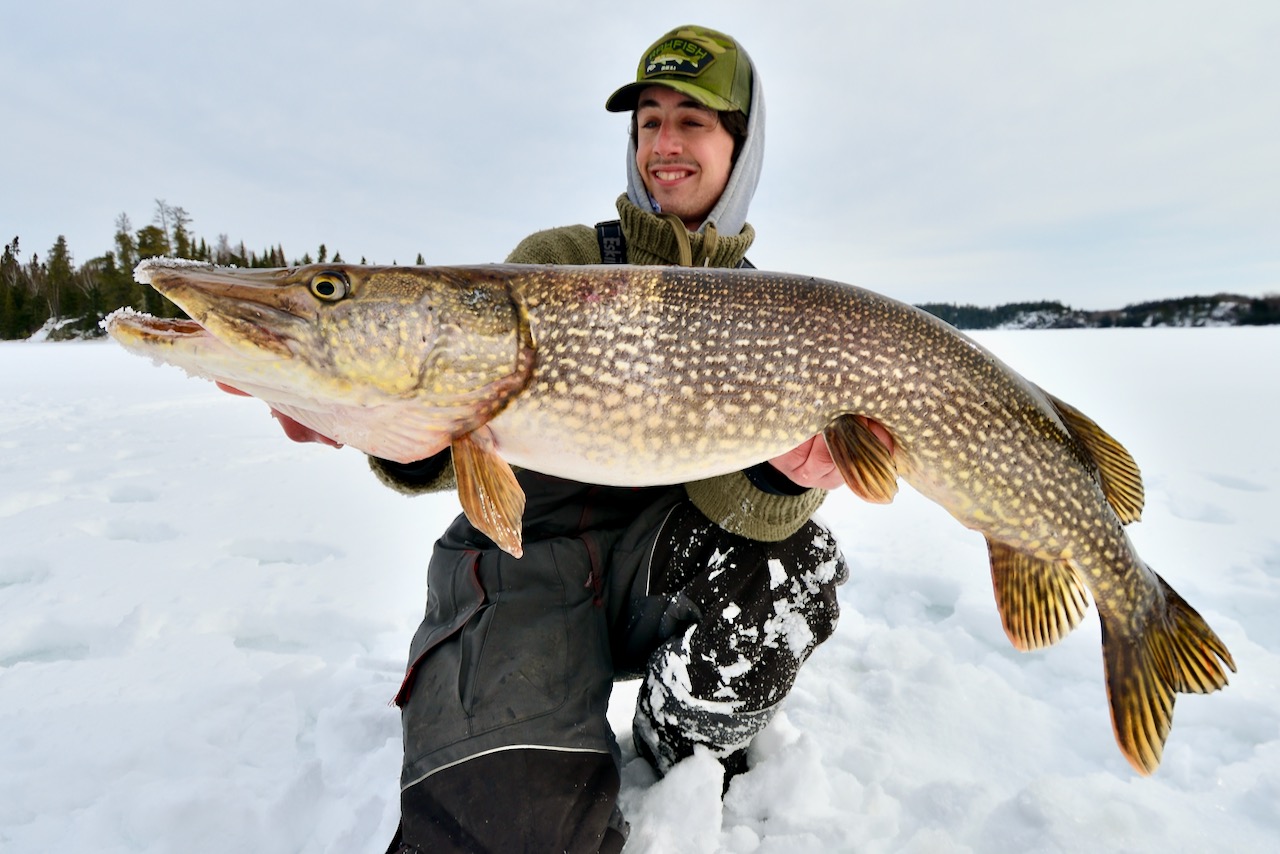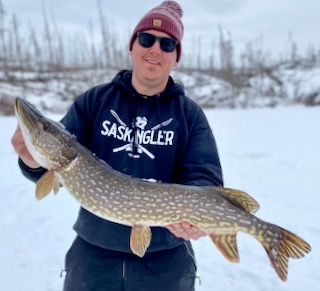PRO PIKE PLOYS
Expert wintertime techniques for hauling more gigantic northerns through the ice
Advertisement

#2 DON’T RUSH TO THE WEEDS
I live on the vast Canadian Shield, where most of the lakes I fish are heavily structured, with countless boulder-strewn points, rock reefs and granite shoals. In the fall, the pike pull out of the weedy bays and coves where they spent the summer and concentrate around these hard-rock features adjacent to the main-lake basin.
I call them “bus stops,” because they remind me of the places kids wait to be picked up when they return to school after the summer holidays. In October and November, it’s possible to catch trophy-sized pike on consecutive casts at such locations.
Advertisement
Bus stops appeal to pike in the fall because they’re primary contact spots for whitefish and ciscoes, the high-protein, soft-rayed forage fish the big toothy critters like to eat. The pike will intercept the dense schools that lay their eggs on the rock rubble and stones, and ambush the ones that hang around into winter after spawning.
Why then do so many pike anglers rush into weedy bays to set tip-ups as soon as the lake freezes over? I mean, some of the best pike action of the entire open-water season just took place at the main-lake bus stops, so why not return to them instead? I do, and the fishing is not only as good, it’s often better than it was before ice up.
What’s even more of a head-scratcher, though, is that those same anglers will frequently tell you they stop fishing for pike in weedy bays during autumn. The cabbage has withered and died, they say, and the decaying vegetation has sucked the oxygen out of the water. If that were true—which it isn’t—why would they rush back to the weeds at first ice? It’s such a counterproductive strategy.
Advertisement

BONUS TIP: RIDE ‘EM HIGH
Don’t make the mistake of jigging—or suspending your dead baits—too close to bottom and below the fish. Northern pike use structure, cover, available daylight and the underside of the ice to silhouette their prey. They are fine-tuned predators that isolate forage swimming above them, so fishing too high is better than fishing too low.
Advertisement
